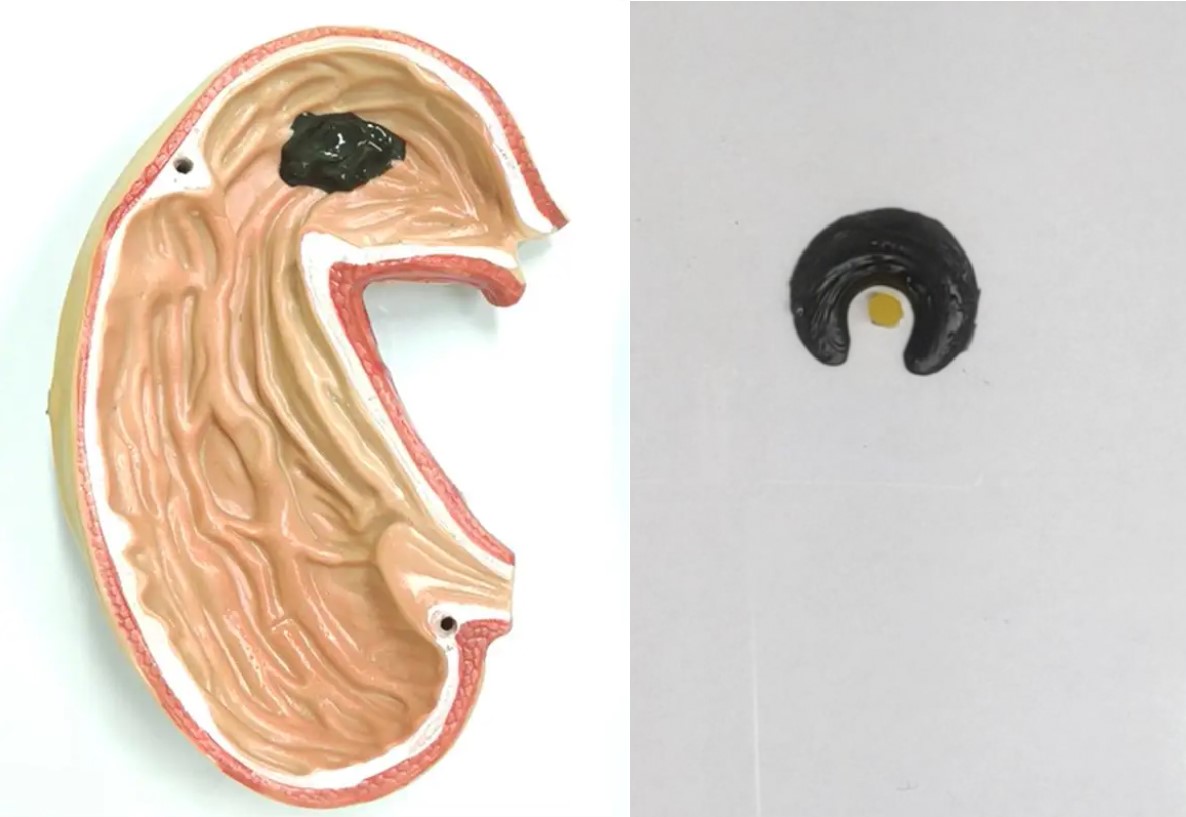ISABEL RUBIO ARROYO | Tungsteno
Soft-body magnetic robots promise to be especially useful for minimally invasive surgery and targeted drug delivery. Having explored the impact of robotics in the healthcare sector and the latest advances in nanomedicine, we now look at the potential of a magnetic slime robot that can navigate narrow passages, grasp substances and transport them. While it could be a valuable tool for preventing damage to the digestive system and avoiding invasive operations, it is necessary to ensure that it is not toxic to the body.
A robot that can transport substances and is "self-healing"
This robot, developed by Hong Kong scientists and whose details have been published in the scientific journal Advanced Functional Materials, acts in a very striking way. As well as being able to negotiate through narrow channels 1.5 millimetres in diameter, it can perform a number of functions, including grasping solid objects, swallowing and transporting harmful things, monitoring human movement and repairing circuits. It can also reassemble itself after being cut into pieces.
This robot has a consistency similar to that of custard, but behaves differently depending on how it is manipulated. "When you touch it very quickly it behaves like a solid. When you touch it gently and slowly it behaves like a liquid," says study co-author Li Zhang, a researcher at the Chinese University of Hong Kong. It is composed of a mixture of a synthetic polymer called polyvinyl alcohol, borax—which is widely used in cleaning products—and magnet particles of neodymium. It is a non-Newtonian fluid, i.e. its viscosity varies with temperature and the shear stress applied to it. Depending on these parameters, it can behave like a solid or a liquid.
"It's very much like mixing water with [corn] starch at home," Zhang added. The Massachusetts Institute of Technology (MIT) explains that when this mixture is made, "weird things happen": "Swish it gently in a bowl, and the mixture sloshes around like a liquid. Squeeze it, and it starts to feel like paste. Roll it between your hands, and it solidifies into a rubbery ball. Try to hold that ball in the palm of your hand, and it will dribble away as a liquid."
The viscosity of non-Newtonian fluids varies with temperature and the stress applied to them. Credit: Massachusetts Institute of Technology.
A "tour" of the body to extract harmful substances
Although the researchers have no immediate plans to test the robot's potential in a medical setting in the short term, they foresee that it could be especially useful in preventing damage to the digestive system. "The idea is whether we can use a Slime Robot to encapsulate or swallow hazardous material in your stomach or your small intestine," says Zhang. For example, to retrieve a battery that someone has accidentally swallowed. Because it is a gel-like material, "it is very soft and there are no sharp edges." The slime could also easily reach places that are difficult for doctors to access without the need for invasive surgical interventions.
At the moment, many details about the potential of this magnetic robot in the health sector are unknown. Its creators have not specified what kind of substances and objects could and could not be removed from the body, and therefore whether it could be used to prevent very serious diseases or to get rid of small potentially harmful particles that would normally remain in the patient. Zhang says he is talking with researchers from the medical school about whether it is really possible to use this slime as a kind of extra hand for a surgeon. "What’s the meaning of an invisible hand?" he asks.
The robot could move through the body to extract harmful substances. Credit: New Scientist.
Also, despite its enormous potential in the medical field, this robot still has some limitations. The main drawback is that the magnetic particles it contains can be toxic. To prevent these particles from interacting with the human body, the researchers have covered the slime with a protective layer of silica, the main component in sand. Still, Zhang acknowledges that safety "will strongly depend on how long you would keep them inside of your body."
Beyond medicine, the robot may also prove useful in other fields. Because the slime mixture is capable of conducting electricity, Zhang also believes the robot could be used to wrap around wires and repair circuits in hard-to-reach places. As the researchers stress, their findings are part of basic research and, for the time being, they are simply trying to understand its material properties. So we will have to wait and see whether their creation will eventually become a robotic surgeon or electrician, or whether it will simply go down in history as just another curious experiment.
· — —
Tungsteno is a journalism laboratory to scan the essence of innovation. Devised by Materia Publicaciones Científicas for Sacyr’s blog.
